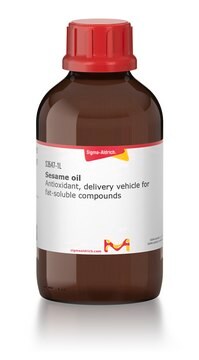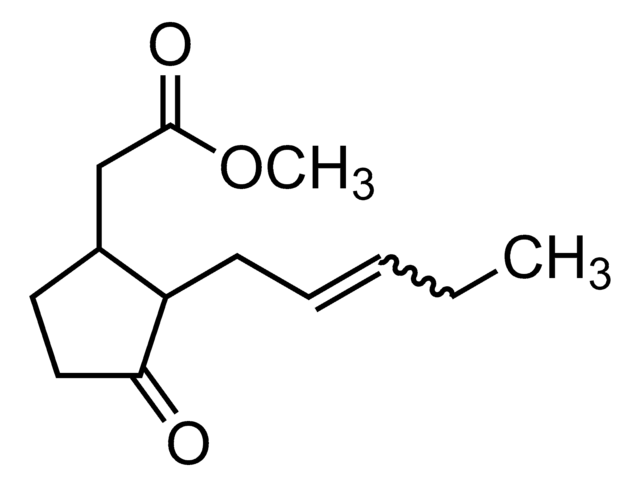E1641
Epibrassinolide
≥85%
Synonyme(s) :
22R,23R,24R-2α,3α,22,23-Tetrahydroxy-B-homo-7-oxa-5α-ergostan-6-one
About This Item
Produits recommandés
Niveau de qualité
Pureté
≥85%
Application(s)
agriculture
Température de stockage
−20°C
Chaîne SMILES
[H][C@@]1(CC[C@@]2([H])[C@]3([H])COC(=O)[C@@]4([H])C[C@H](O)[C@H](O)C[C@]4(C)[C@@]3([H])CC[C@]12C)[C@H](C)[C@@H](O)[C@H](O)[C@H](C)C(C)C
InChI
1S/C28H48O6/c1-14(2)15(3)24(31)25(32)16(4)18-7-8-19-17-13-34-26(33)21-11-22(29)23(30)12-28(21,6)20(17)9-10-27(18,19)5/h14-25,29-32H,7-13H2,1-6H3/t15-,16+,17+,18-,19+,20+,21-,22+,23-,24-,25-,27-,28-/m1/s1
Clé InChI
IXVMHGVQKLDRKH-QHBHMFGVSA-N
Application
- in Murashige and Skoog (MS) medium to study the cotyledon and shoot length response of Cappelle-Desprez (rht8) and RIL6 (Rht8) plants towards it
- in callus-inducing medium for callus induction
- to induce the expression of the gene leaf inclination 2 (LC2) in rice sampling
Mentions de danger
Conseils de prudence
Classification des risques
Aquatic Chronic 4
Code de la classe de stockage
11 - Combustible Solids
Classe de danger pour l'eau (WGK)
WGK 3
Point d'éclair (°F)
Not applicable
Point d'éclair (°C)
Not applicable
Équipement de protection individuelle
Eyeshields, Gloves, type N95 (US)
Certificats d'analyse (COA)
Recherchez un Certificats d'analyse (COA) en saisissant le numéro de lot du produit. Les numéros de lot figurent sur l'étiquette du produit après les mots "Lot" ou "Batch".
Déjà en possession de ce produit ?
Retrouvez la documentation relative aux produits que vous avez récemment achetés dans la Bibliothèque de documents.
Les clients ont également consulté
Notre équipe de scientifiques dispose d'une expérience dans tous les secteurs de la recherche, notamment en sciences de la vie, science des matériaux, synthèse chimique, chromatographie, analyse et dans de nombreux autres domaines..
Contacter notre Service technique















